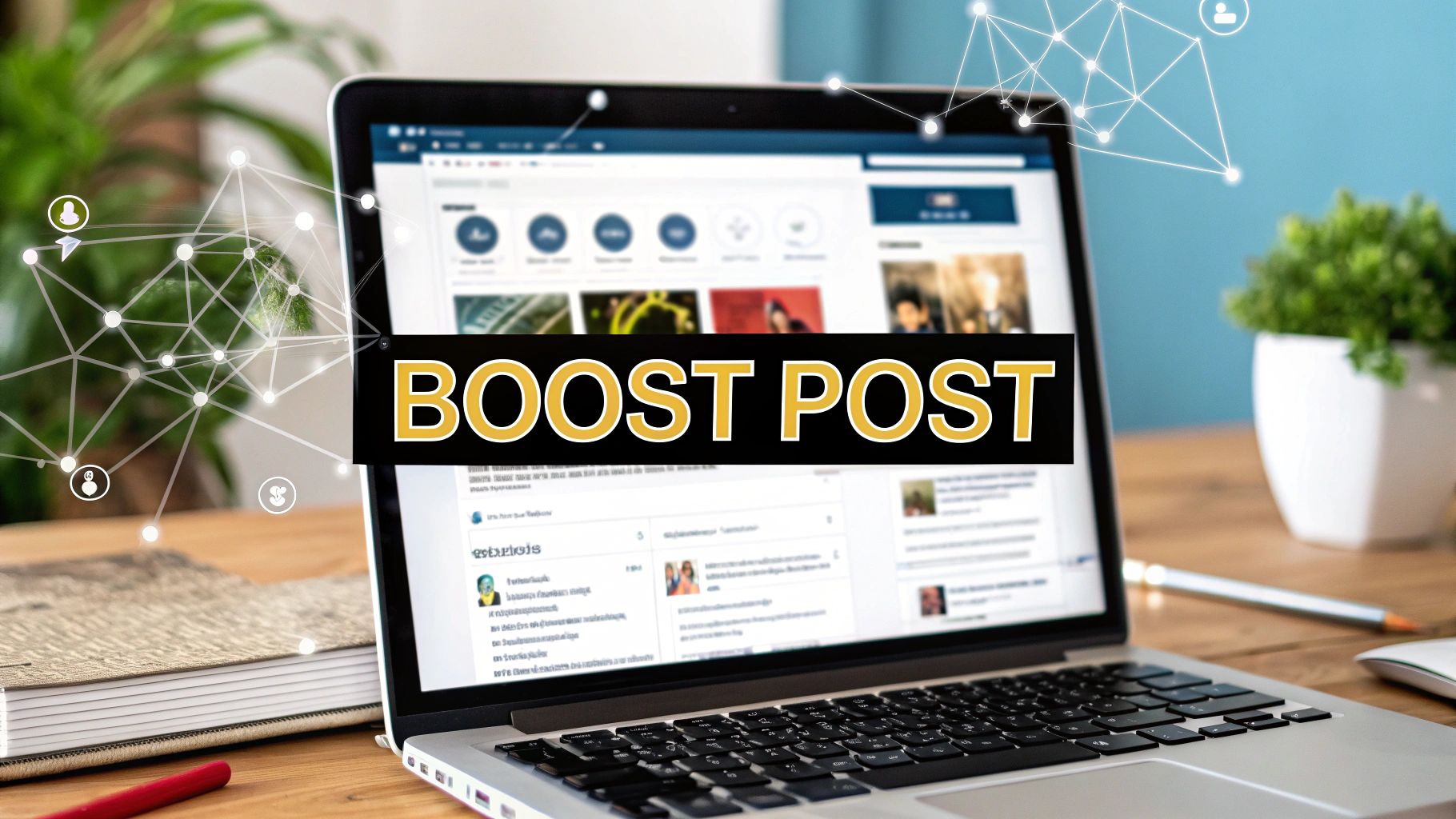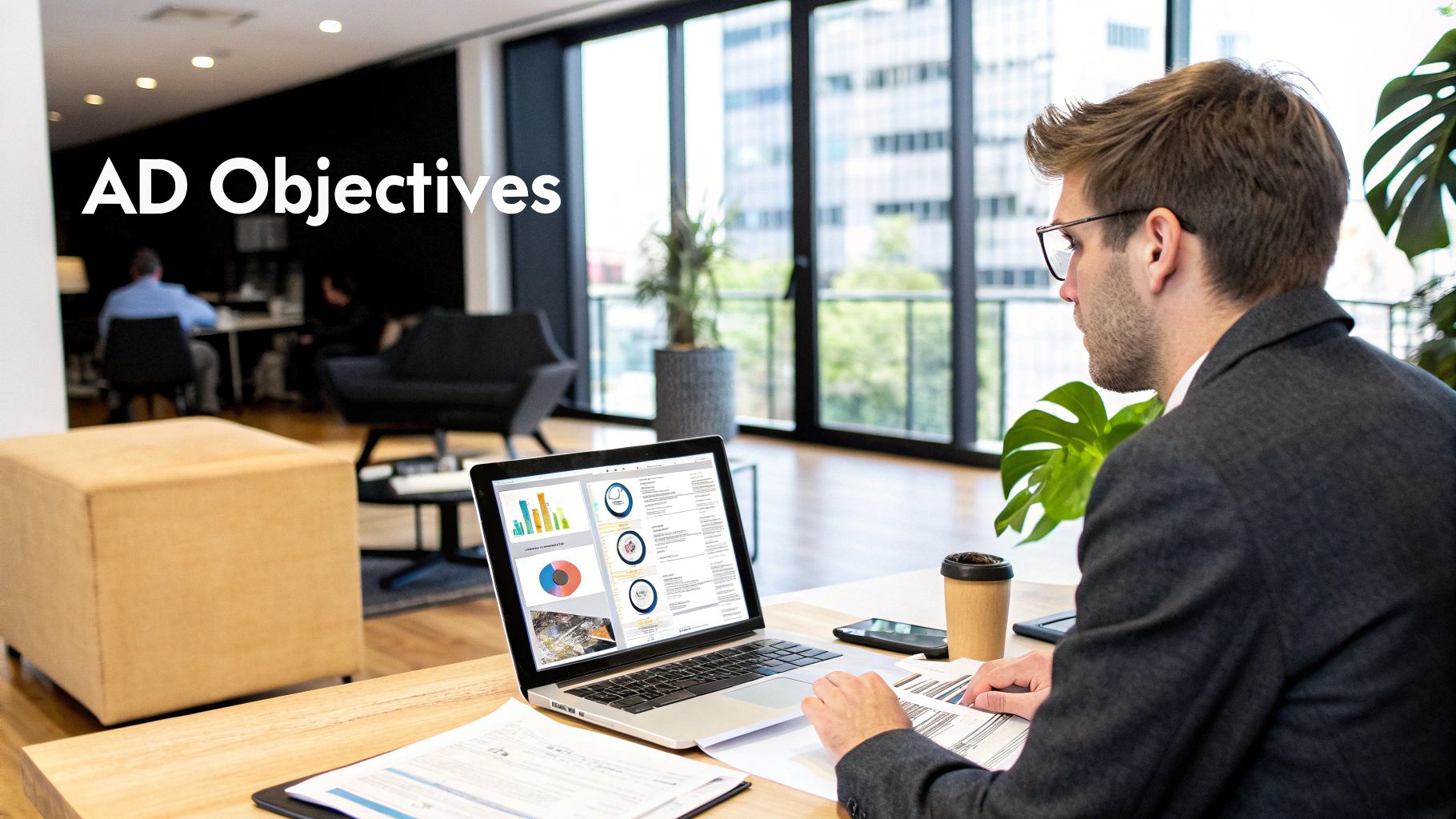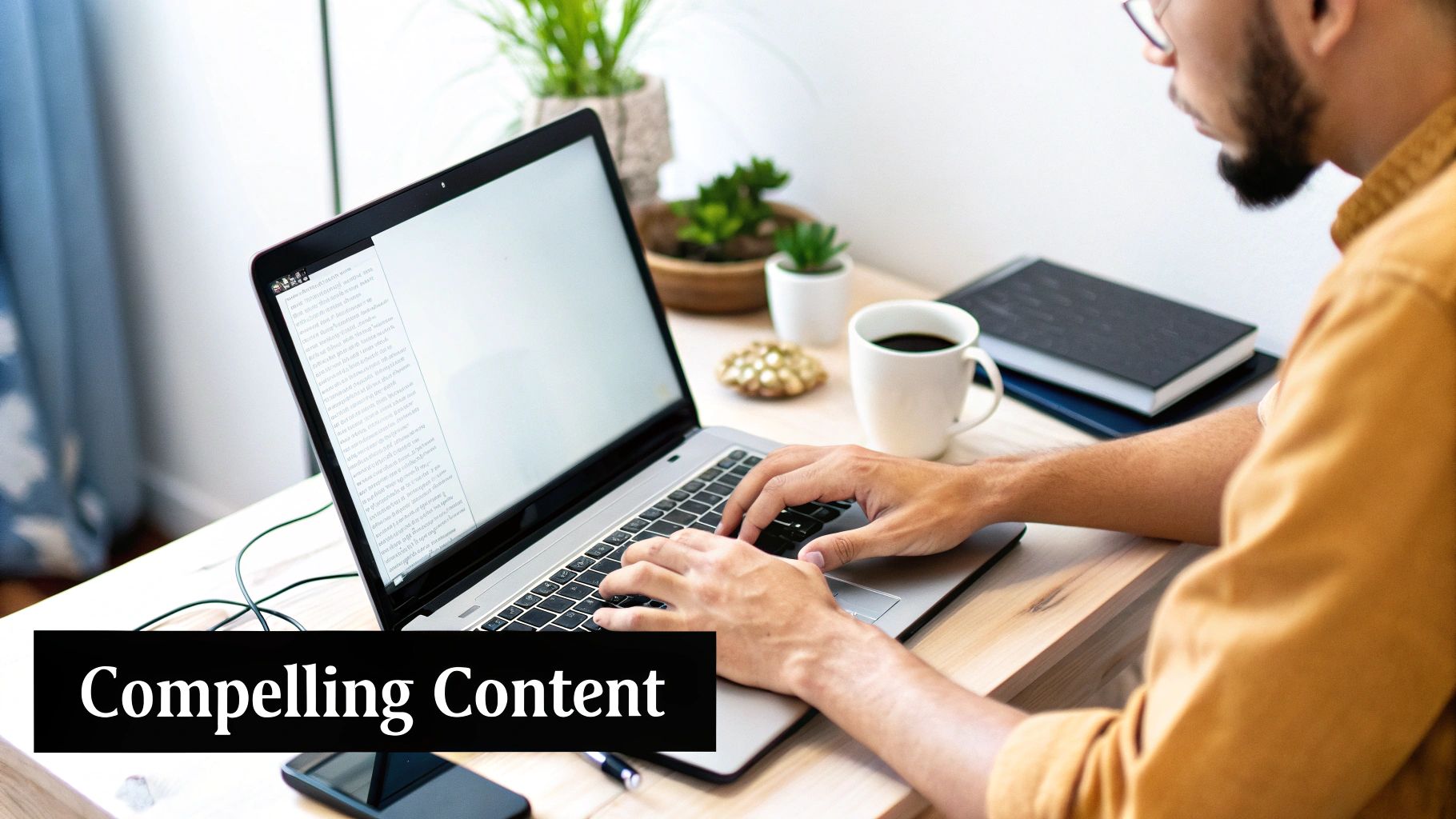
Boosting a Post on LinkedIn: Expert Tips for Success
Published on 2025-04-29
Why Boosting a Post on LinkedIn Transforms Business Growth

Savvy marketers know that paid amplification on LinkedIn isn’t just optional—it powers growth. Its B2B ecosystem brings together professionals ready to make purchases, something organic reach alone can’t achieve. By boosting posts strategically, businesses can reignite discussions, speed up pipeline progression, and demonstrate thought leadership to the right decision-makers.
Algorithm Shift That Makes Boosting Essential
LinkedIn’s algorithm now favors posts with early engagement signals, so paid boosts help content escape feed filters. Even established brands with loyal followers see top posts underperform unless they invest in initial paid reach. Boosting moves your message beyond existing connections to wider decision-maker audiences.
Unique B2B Ecosystem That Drives Opportunities
LinkedIn lets you target audiences based on professional data, so boosted posts can:
- Zero in on C-suite executives, senior managers, or industry-specific segments
- Reach prospects by company size, role, or years of experience
- Use interest-based groups or professional skills
- Tap into custom audiences from website visits or CRM data
This precision leads to higher-quality leads and smoother handoffs to your sales team. Additionally, LinkedIn Ads recorded a 2.8% quarter-over-quarter increase in ad reach, now touching 14.6% of the world’s adult population (almost 1 billion users). Over 80% of B2B marketers say results here exceed those on other channels, and 35% of viewers engage with brands when they have purchase intent. Explore this topic further
3–5x Engagement Through Strategic Boosting
Aligning boost goals with content type and timing can drive 3–5x engagement. To see how LinkedIn stacks up against other social platforms for B2B marketing, review the comparison below.
LinkedIn Ads Performance vs. Other Social Platforms
A comparison of key performance metrics across major social media advertising platforms for B2B marketing
| Platform | B2B Conversion Rate | Cost Per Lead | Lead Quality Score | Decision-Maker Reach |
|---|---|---|---|---|
| 6.1% | $75 | 8.9/10 | 1 in 3 | |
| 2.4% | $58 | 6.4/10 | 1 in 9 | |
| 1.8% | $72 | 5.7/10 | 1 in 12 | |
| 2.2% | $65 | 6.1/10 | 1 in 8 |
This table highlights LinkedIn’s superior conversion rates and its unmatched reach to senior decision-makers, making it a standout choice for B2B outreach.
Aligning Boosts With Business Objectives
Map your boost to clear goals to maximize ROI:
- Brand Awareness: Target C-level prospects at scale
- Lead Generation: Drive form completions or demo sign-ups
- Website Traffic: Send high-value audiences to landing pages
- Event Promotion: Increase registrations within specific segments
By setting measurable benchmarks for engagement uplift and cost per lead, you’ll showcase clear outcomes to stakeholders. Next, we’ll dive into the step-by-step process of creating and optimizing boosts.
Boosting a Post on LinkedIn: A Master Walkthrough

This process flow infographic visualizes the five stages involved in boosting a LinkedIn post, showing how each decision shapes the next phase. It highlights how selecting the right content sets off a chain of actions that influence targeting, budget, and performance review.
For marketers, navigating LinkedIn’s boost feature can be straightforward when you follow the 5 key steps below. These steps guide you from choosing standout content all the way through launch and optimisation, ensuring each action builds on the last.
Select the Right Post to Amplify
Choosing which post to boost goes beyond personal preference—it relies on performance data.
- Review organic metrics: look for posts with above-average impressions or engagement rates
- Identify content gaps: a high view count but few comments can signal potential for deeper interaction
- Align with business goals: whether aiming for awareness, traffic, or lead capture, match your post to your objective
Navigate LinkedIn’s Boost Interface
Once you’ve picked your post, hit the Boost button in the top-right of your page update.
- Confirm billing details and ad account settings
- Switch between objectives like Engagement or Website Visits before proceeding
The objective you choose next will dynamically update targeting options and budget fields.
Choose Your Boost Objective
Your selected objective determines how LinkedIn prioritizes delivery and measures success. Below, find a comparison table to match each option with your marketing goals and budget.
LinkedIn Boost Objectives Comparison
Analysis of different boost objective options and when to use each based on your marketing goals
| Objective Type | Best Used For | Typical Cost Range | Key Metrics to Track | Recommended Audience Size |
|---|---|---|---|---|
| Brand Awareness | Wide exposure to new leads | $15–$50/day | Impressions, Reach | 50K–200K |
| Engagement | Likes, comments & reshares | $20–$60/day | Engagement Rate | 10K–50K |
| Website Traffic | Driving clicks to a landing page | $25–$75/day | Click-Through Rate | 20K–100K |
| Lead Gen | Form submissions or demo requests | $30–$100/day | Conversion Rate | 15K–60K |
As the table shows, each objective has distinct metrics and audience ranges—select the one that best aligns with your campaign’s purpose.
Fine-Tune Targeting and Schedule
Delivering your boosted post to the right audience is crucial.
- Define location, job titles, industries, and seniority—start broad, then refine
- Apply Saved Audiences or Website Retargeting for contacts already familiar with your brand
- Set at least $15/day to ensure steady delivery, planning your dates to coincide with launches or events
This approach schedules your boost when the target audience is most active.
Launch, Monitor, and Optimize
After confirming all settings, click Boost and watch your post gain visibility. Use LinkedIn Campaign Manager to track real-time metrics and adjust budgets or audiences as needed.
By following this step-by-step process, you’ll replace guesswork with a replicable boost strategy, measuring results and refining your approach with each campaign.
Audience Targeting That Delivers Exceptional ROI

Audience targeting is the foundation of any well-performing boost campaign. Focusing on the right professionals rather than a broad crowd cuts down on wasted budget and drives genuine interactions. For example, a B2B SaaS vendor narrowed its audience to IT directors and saw cost per lead drop by 30%. Below, we outline how to build these precision audiences.
Segmenting Audiences With Surgical Precision
LinkedIn offers filters that break down your pool by:
- Industry: Zero in on the verticals that match your product
- Seniority: Reach managers, directors or C-suite titles
- Company Size: Align messaging with budget brackets
- Professional Interests: Target specific skills, groups or thought-leadership areas
This level of detail ensures your boosted post lands in front of the people most likely to take action.
Combine Filters Strategically
To boost relevance, layer parameters:
- Begin with one dimension (e.g., Industry) then add Seniority
- Use Company Size to refine segments with different budget levels
- Test Professional Interests for deeper engagement insights
Experimenting with these combinations uncovers audience segments that outperform broad-stroke targeting.
Organic Reach Vs. Paid Amplification
Organic LinkedIn posts averaged 811 impressions per post in 2024, up 16% from 696 in 2023. However, boosting posts expands that reach: the platform’s algorithm rewards engagement, and ads target decision-makers—4 out of 5 members influence purchasing choices. Marketers report that paid campaigns can double conversion rates compared to organic efforts alone, with prospects six times more likely to purchase after seeing sponsored content. Additionally, multi-image posts and native videos achieve 5–6% engagement rates, making them ideal formats for maximizing ROI. Read the full research here
Targeting Options Comparison
| Parameter | Best Use Case | ROI Impact |
|---|---|---|
| Industry | Vertical product launch | +20% engagement |
| Seniority | Executive-level thought piece | +35% conversion lift |
| Company Size | SME-focused demo sign-ups | −30% cost per lead |
| Interests | Skill-based webinar invites | +25% click-through |
Harness Retargeting To Re-Engage
Retargeting reconnects with high-intent prospects:
- Website Visitors: Re-show content to users who viewed your product pages
- Video Viewers: Engage those who watched your native videos
- Document Downloaders: Follow up with people who downloaded your resources
- Page Engagers: Target users who liked, commented or shared
Layering retargeting with lookalike segments broadens reach to similar profiles.
Avoid These Common Targeting Mistakes
- Overly Narrow Audiences: Too many filters can shrink delivery and raise CPC
- No Exclusions: Exclude existing customers to prevent wasted impressions
- Skipping A/B Tests: Compare two audience sets to find top performers
- Static Segments: Refresh audiences regularly to avoid ad fatigue
By combining precise segmentation, strategic filter layering and thoughtful retargeting, boosting a post on LinkedIn delivers exceptional ROI every time.
Crafting LinkedIn Content That Converts When Boosted
Boosting a post on LinkedIn calls for more than strong copy. You need a precise headline, eye-catching visual, and clear structure to make professionals pause their scroll. By applying psychological triggers and aligning each element with your objective, you can turn visibility into action.
Crafting Scroll-Stopping Headlines
A headline is your first hook. To capture decision-makers’ interest:
- Lead with a bold statistic or claim, for example “4 in 5 CMOs Are Ignoring This Strategy”
- Promise a tangible benefit, such as “Discover How to Cut Lead Costs by 30%”
- Keep it concise—aim for 8–12 words for easy mobile reading
- Use action verbs like Boost, Master, or Accelerate
These approaches help ensure your boosted post grabs attention before the next update appears.
Visual Formats That Outperform
Choosing the right media can raise engagement significantly. The average rates below show top performers:
| Format | Engagement Rate | Best Use Case |
|---|---|---|
| Native Document | 6.1% | Whitepapers, in-depth reports |
| Infographic | 5.0% | Simplifying complex data |
| Video | 4.5% | Demos or expert interviews |
| Single Image | 3.2% | Quick insights or quotes |
For instance, thought leadership content drives 6× more engagement than job postings. When boosted, educational pieces reach 6.1% engagement, the highest of any format. Find more detailed statistics here.
Structuring Copy For Maximum Impact
The way you organize text guides reader focus. Follow this outline:
- Start with a compelling hook
- Divide into 2–3 concise paragraphs
- Include bullet points or subheads for easy scanning
- End with a clear call to action (CTA) aligned to your goal
This structure helps professionals quickly digest key points and act on your CTA.
Adapting Messaging For Campaign Objectives
Customize your tone and CTA based on your aim:
- Brand Awareness: share high-level insights with broad appeal
- Lead Generation: offer a downloadable resource or demo link
- Website Traffic: use an urgent, clickable link emphasizing benefits
- Event Promotion: highlight date, time, and speaker credentials
Matching copy to objectives ensures your boost drives the right outcome.
Psychological Triggers To Tap Into
Incorporate motivational hooks that resonate with professionals:
- Social Proof: include quotes from well-known brands or endorsements
- Authority: reference industry data or expert credentials
- FOMO: stress limited availability or exclusive insights
- Curiosity: pose a question that your post will answer
When these triggers align with your message, engagement follows naturally.
A/B Testing And Iteration Framework
Ongoing refinement boosts ROI. Try this process:
- Use autoghostwriter to create multiple headline and image variants
- Allocate a small budget to each variant for 48–72 hours
- Compare engagement, click-through rates, and conversion metrics
- Scale top performers and adjust underperformers accordingly
By combining attention-grabbing headlines, optimal formats, and data-driven testing, your boosted posts will consistently convert and deliver results.
Budget Optimization That Maximizes Every Dollar

Once your content and targeting are in place, the next step is making sure every dollar you spend on boosting a post on LinkedIn delivers impact. Allocating budget thoughtfully transforms spending into a data-driven cycle that balances reach, engagement, and cost efficiency. Below are practical methods—from defining budgets to dayparting—trusted by marketing teams to measure real ROI.
Setting A Realistic LinkedIn Budget
Before you hit “boost,” establish a daily spend that aligns with industry benchmarks and your campaign goals. B2B SaaS firms often start at $25–$50/day, while larger enterprises may allocate $100+ per day for broad awareness. To set your baseline, consider:
- Industry median spend (e.g., tech vs. finance)
- Competitive intensity (number of advertisers in your target)
- Campaign objectives (awareness, leads, website visits)
These guardrails help prevent underfunding tests and give stakeholders clear justification for your budget.
CPC Versus CPM: Choosing The Right Model
Your bidding option—cost-per-click (CPC) or cost-per-thousand impressions (CPM)—determines how LinkedIn delivers your boost.
| Bid Model | Best For | Average Rate | Primary Benefit |
|---|---|---|---|
| CPC | Lead generation | $5.26 per click | Only pay for clicks |
| CPM | Brand awareness | $6.59 per 1,000 views | Maximize reach |
Tip: Choose CPC to control cost-per-action (like form fills). Opt for CPM when your priority is broad exposure at a predictable rate.
Key Metrics For True ROI
Impressions are nice to see, but conversion metrics reveal performance. Track these core indicators:
- Cost Per Lead (CPL): Aim for <$75 in initial tests
- Click-Through Rate (CTR): Target 0.35%+ for boosted posts
- Engagement Rate: Look for 2–3% on B2B content
- Attribution Window: Use LinkedIn’s 30-day click and 90-day view metrics
Additionally, tag links with UTM parameters and integrate results into your CRM for accurate pipeline validation.
Scaling And Dayparting For Efficiency
When your metrics meet targets, scale methodically:
- Increase budget by 20% weekly only if CPL and CTR stay on track
- Pause or reduce spend on underperforming days to reallocate funds
- Daypart during peak windows (e.g., 8–10 AM and 5–6 PM) to potentially lower CPC by 15%
Finally, refine audiences each month by excluding low-engagement segments and building lookalikes from top converters. These adjustments keep boosted posts cost-effective and growth-oriented.
Beyond Basic Boosts: Building Integrated Campaigns
Moving from single boosts to full-scale campaigns unlocks compounding impact. Instead of treating boosting a post on LinkedIn as a standalone tactic, think of it like a multi-leg journey—each step guides prospects closer to conversion. By sequencing posts, repurposing assets, and weaving in retargeting, you create a cohesive narrative that resonates at every stage.
Sequencing Multiple Boosted Posts for Buyer Journey
To guide prospects through Awareness, Consideration, and Decision stages, plan a series of boosted posts that build on one another:
- Awareness: Industry insights or trend reports to spark initial interest
- Consideration: Case studies, whitepapers, or webinars that address pain points
- Decision: Clear CTAs offering demos, trials, or consultations
- Post-Decision: Customer testimonials or ROI summaries
For example, campaigns with 58% higher engagement often start with a broad-reach post, then retarget viewers who clicked for deeper content. Each boost feeds data into the next, driving momentum and maximizing budget efficiency.
Repurposing Boosted Content Across Channels
Integrated campaigns extend beyond LinkedIn. High-performing posts can be reshaped into:
| Channel | Format | Engagement Uplift |
|---|---|---|
| Email Newsletter | Snippet + link | 12% higher CTR |
| SlideShare Deck | Visual summary | 8% more views |
| Blog Post | Expanded article | 15% longer time on page |
By turning a boosted LinkedIn post into an email snippet or SlideShare deck, you reinforce messages and tap new audiences. Additionally, cross-channel repurposing reduces content creation costs by up to 30%.
Sophisticated Retargeting and Ad Coordination
Creating retargeting sequences based on engagement signals lets you deliver the right message at the right time:
- Build Custom Audiences of users who liked, commented, or clicked
- Sequence follow-up boosts optimizing for conversion or content downloads
- Align budgets to mix boosted posts with formal LinkedIn ad campaigns
A/B tests show that retargeted audiences convert at 2.3x the rate of cold segments. Table comparisons help illustrate budget allocation:
| Audience Type | Conversion Rate | Cost Per Lead |
|---|---|---|
| Cold (Single Boost) | 1.5% | $85 |
| Retargeted | 3.5% | $50 |
Leveraging Employee Advocacy Networks
Employee amplification can multiply your reach with minimal ad spend. Posts shared by team members generate up to 8x more engagement. Best practices include:
- Providing share-ready templates and visuals
- Hosting short training sessions on brand tone
- Running contests to reward top advocates
When combined with paid boosts, advocacy cements credibility and sparks organic conversations.
Case Study: B2B SaaS Integrated Boost Campaign
A mid-market SaaS provider sequenced three boosted posts—industry overview, product demo, user testimonial—then retargeted audiences with a gated whitepaper. By encouraging 25 employees to share each post, they achieved 75% lift in engagement and added $1M to pipeline value within six weeks. This integrated approach outperformed isolated boosts by 40%.
Ready to turn your boosted posts into full-fledged campaigns? Supercharge your LinkedIn content with autoghostwriter and start crafting multi-stage sequences that convert.
Get started with autoghostwriter today and scale your professional storytelling.